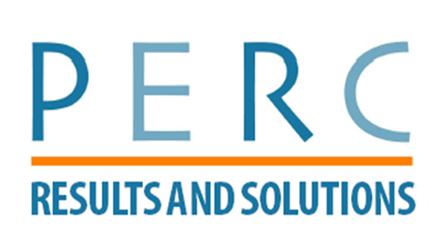 Fully Reported Utility and Telecommunications Payment Data Could Expand Credit Access for “Credit Invisibles,” PERC Study Finds
Fully Reported Utility and Telecommunications Payment Data Could Expand Credit Access for “Credit Invisibles,” PERC Study Finds
Using fully reported utility and telecommunications payment data (timely and late payment information) in credit reports and credit scores could expand credit access for significant numbers of Americans with thin or no credit files while decreasing credit risk for lenders overall, according to new research from the Policy and Economic Research Council (PERC).
“In order to qualify for credit, consumers must already have a credit history with financial institutions,” said Dr. Michael Turner, president and CEO of PERC and one of the study’s co-authors. “This “Credit Catch-22” can be responsibly addressed by incorporating information about consumers’ payment history to non-financial accounts like utilities and telecom companies. This data can enhance risk assessment of consumers who lack a credit history or credit score as well as those who already have credit or a credit score.”
Analyzing data fields in more than 4 million credit files from a national consumer reporting agency, the authors find that consumers who have made timely payments for non-financial accounts for an extended period of time or who do not have a severe delinquency were found to be of lower risk for delinquencies in bank card payments, mortgage payments and negative credit events like bankruptcies, liens and judgments.
The utility and telecommunications customers who pay on time appear to have lower scores than they would if those payments were reported to the main consumer credit databases of the nationwide consumer reporting agencies (CRAs). Conversely, utility and telecom customers who pay very late are higher risk than their traditional data-based credit scores indicate.
“Excluding utility and telecommunications data is unfair to those consumers who pay these bills on time,” said Turner. “Including this data can improve lenders’ ability to assess risk so they can extend credit responsibly.”
This month, the Consumer Financial Protection Bureau (CFPB) released a report that estimated that 26 million Americans are “credit invisible” or without credit files at the nationwide consumer reporting agencies. An additional 19 million have no credit score due to a lack of recent credit information or an insufficient credit history. Past PERC research has shown that many of these 45 million could gain credit scores and improved access to mainstream credit if non-financial payment histories, such and utility, telecom, and rental data were reported to the main consumer databases of the CRAs.
The CFPB report also found that Black consumers, Hispanic consumers, and consumers in low-income neighborhoods are more likely to be among the “credit invisibles” or the unscored population. For instance, in lower-income neighborhoods, an astounding 45% lacked adequate data to have a traditional credit score.
Several of these findings are consistent with earlier studies conducted by PERC, one of which was cited in the CFPB report. PERC reports from 2006 and 2012 found that using utility and telecommunications payment data increased credit acceptance for between 8 and 10% of consumers, with nearly double the rate seen for Hispanic, Black and low-income consumers.
“This study, together with PERC’s recent study examining how federal law discourages consumers from learning more about their credit reports and scores, offer valuable insights to policymakers who wish to expand financial inclusion and promote financial literacy,” said Turner.
PERC released a study last month that found implementation of the Credit Repair Organizations Act (CROA) discourages interested consumers from learning more about their credit reports and scores, creating conflicts with other federal laws and public policy objectives.
That study, co-authored with the Take Charge America Institute (TCAI) at the University of Arizona, examined data from users of a credit education product offered by a national consumer reporting agency and found improvements in credit scores and consumers’ credit tiers materially outpaced those of a comparison group. Despite these benefits, few consumers completed the purchase process to learn how to improve their scores, with significant numbers citing obstacles imposed by compliance with CROA.
You can download the new report on PERC’s website here: PERC.NET






















